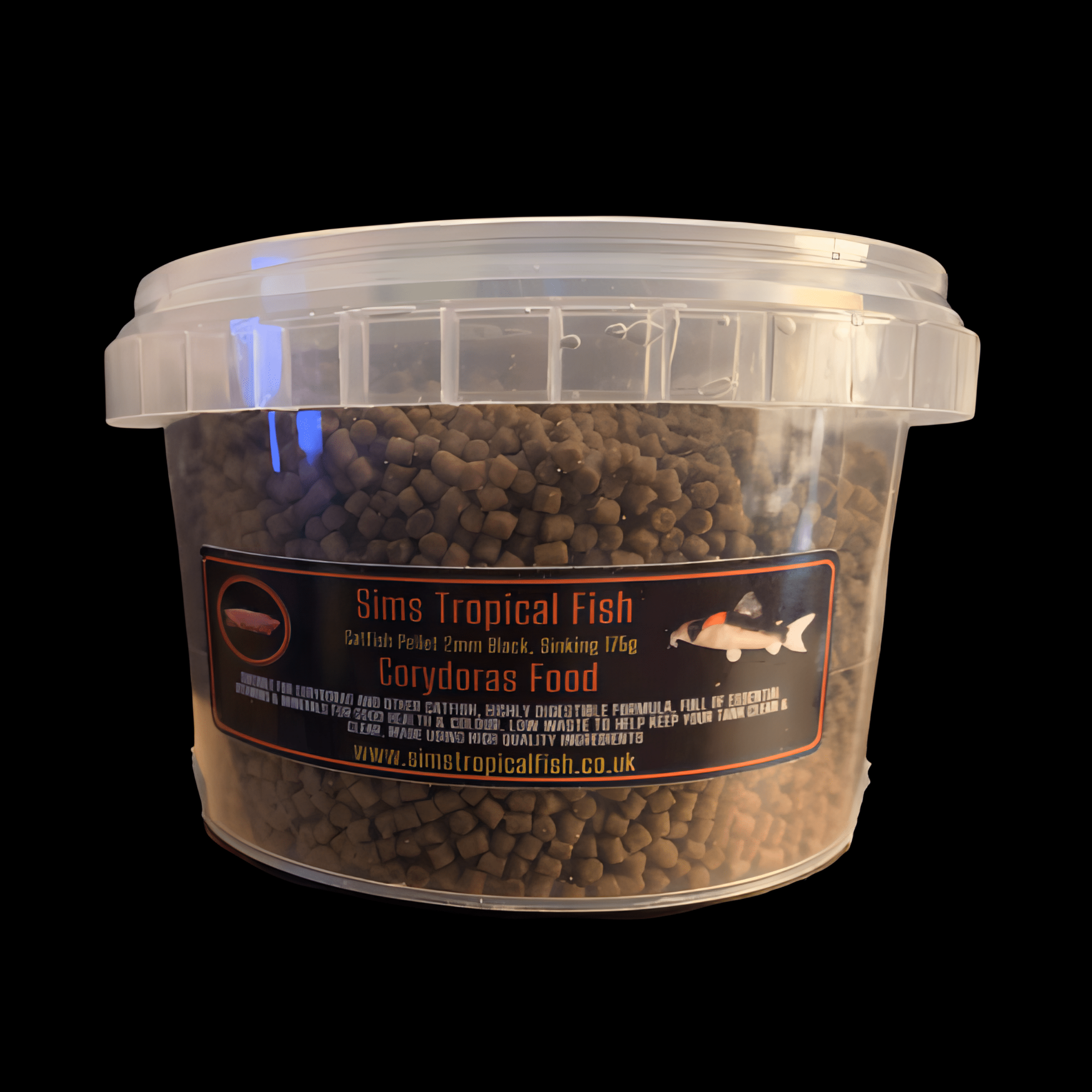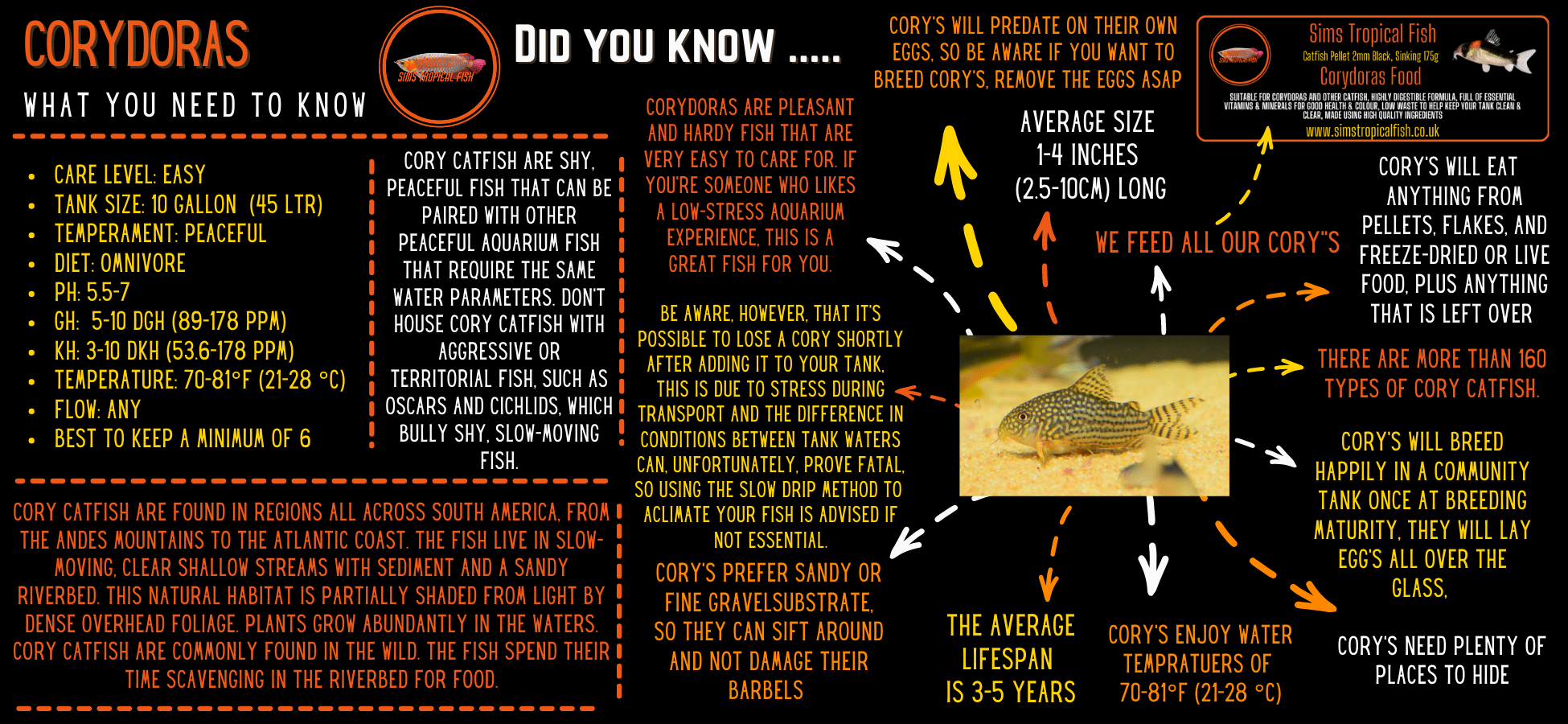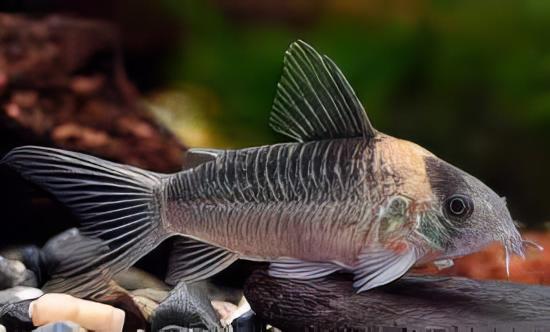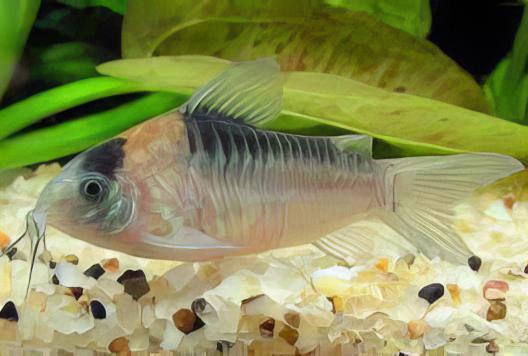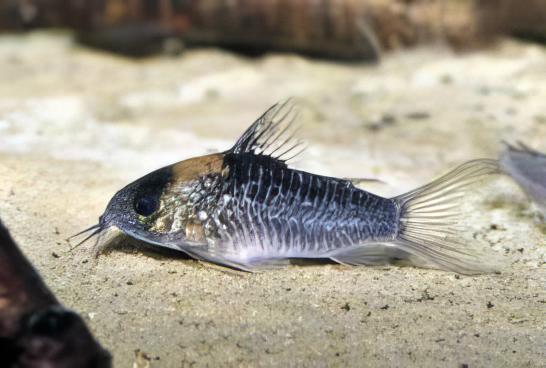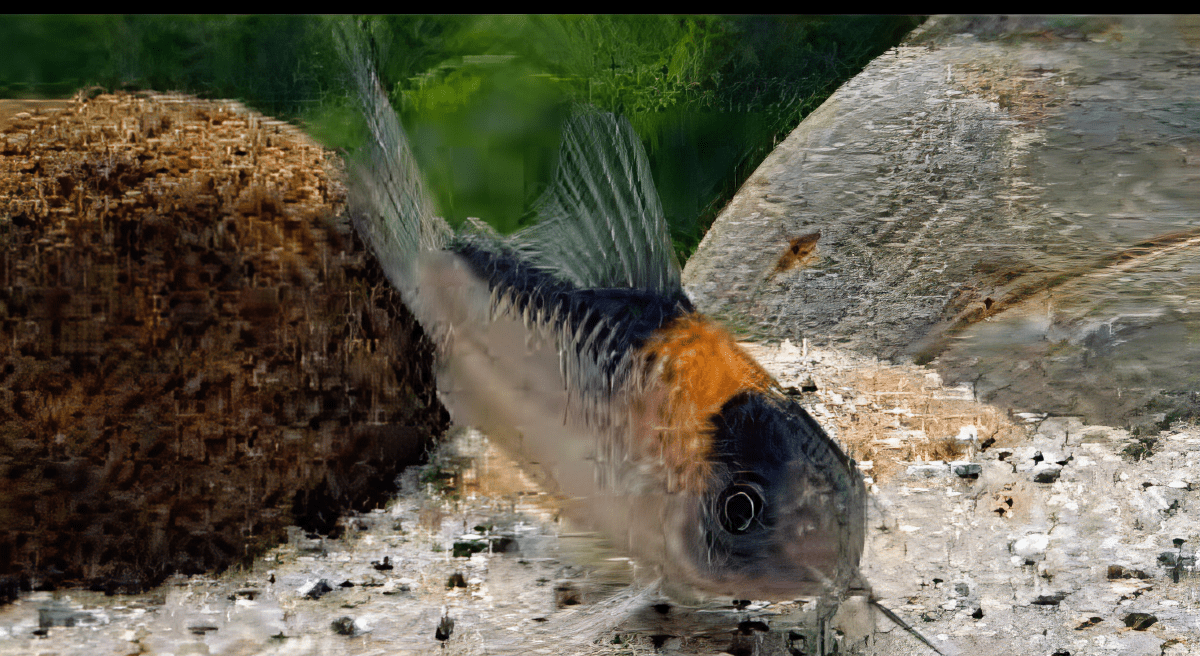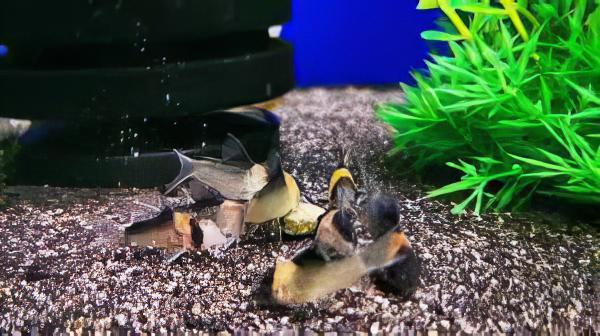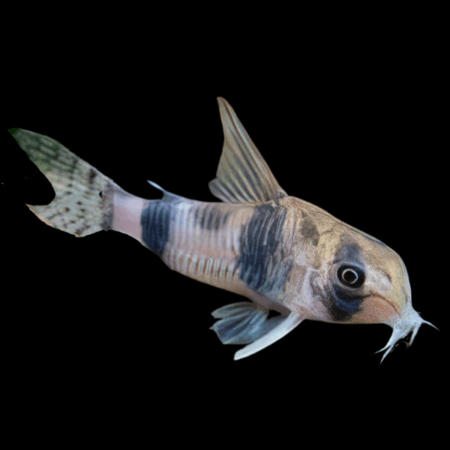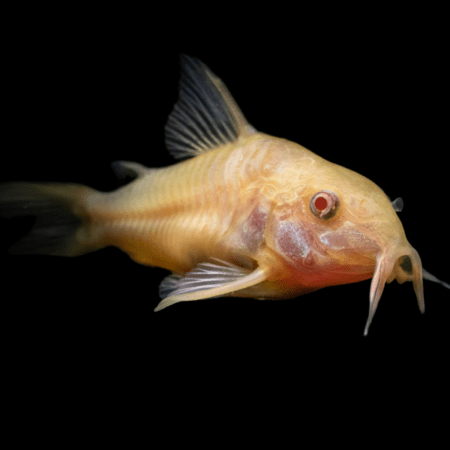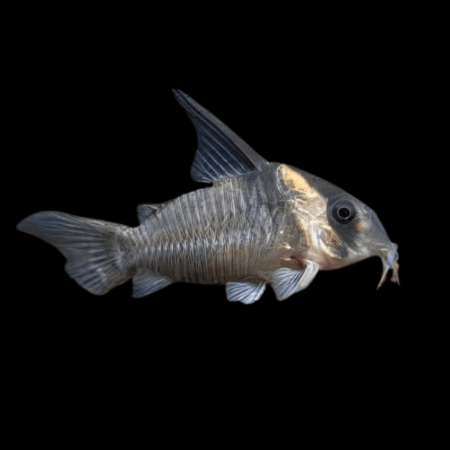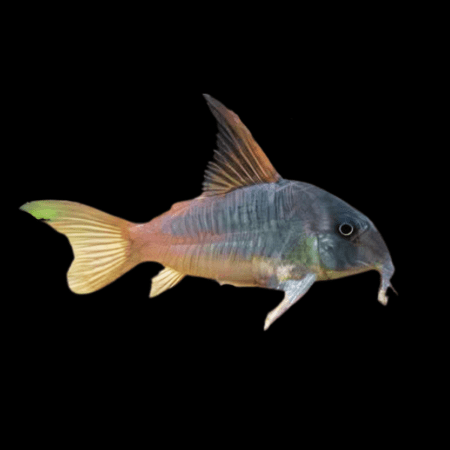Description
Nijessens Corydoras Nijsseni
Corydoras nijsseni
Corydoras nijsseni was described in 1989 by Sands. They are part of the family Callichthyidae or the armoured catfish. This family is characterised by a lack of scales. Instead, they have two rows of bony plates under the skin that act as armour. The family has nine genera and over 200 species.
The genus name Corydoras can be divided into two parts. Cory means helmet and doras means skin. A mistake in the naming as it was intended to use the word armour (cuirasse), a reference to the two rows of bony plates on the flank of these fish. This strain is named after Dr Han Nijssen. In the number system of the Corydoras, they have been given the number C111.
Synonym: Corydoras elegans nijsseni.
Description
The colour of Corydoras nijsseni is somewhat variable. A black mask runs over the eye with a yellowish light spot behind it. A black band runs over the back and flank that more or less continues downwards. Some specimens have a very light colour on the flank, others (much) darker. The belly is whitish.
This is a small Corydoras species. They grow up to 4.5 centimetres long. The females are much more plump and larger than the males. Corydoras nijsseni males are somewhat more intensely coloured than females and also have relatively larger fins.
Biotope
Corydoras nijsseni comes from the Rio Negro basin.
Diet
In the wild, the diet of Corydoras nijsseni consists mainly of small meaty foods such as small worms and insects. In the aquarium, it is not a picky eater. Pellet, flake food, granulate, but especially frozen and live food are readily eaten. Just make sure that some food reaches the bottom.
The aquarium
An aquarium from 50 centimetres should be sufficient, provided there are not too many benthic fish. Keep Corydoras nijsseni in a group of at least 10 specimens. They feel much more comfortable in the company of many of their peers.
Set up the aquarium with (filter) sand on the bottom. With their barbels, they dig through the soil in search of something edible. Sharp sand or gravel is not suitable. Their beard threads can get damaged by accumulating dirt, sometimes they lose their beard threads due to infections when held over gravel or sharp sand.
The decoration of the aquarium can also consist of some plants and, for example, driftwood. They can then hide between the plants or the wood.
Keep the temperature between 22 and 27 degrees Celsius. The pH is preferably below 7.0 with a lower limit of 5.0.
Breeding Corydoras nijsseni
The breeding of Corydoras nijsseni takes place as with many other Corydoras species. They are a bit more difficult to breed than the easier varieties.
For best results, separate a group of Corydoras nijsseni with a ratio of two males to one female. Keep the temperature at 24 degrees Celsius. You don’t have to decorate the aquarium, but place some sand on the bottom and possibly a flower pot for some hiding places. Make sure the aquarium is properly aged.
Feed them well with live food for a few days. Now refresh the water for about 80% with fresh water and lower the temperature to about 18 degrees Celsius. This simulates the rainy season after which the fish will spawn in the wild.
The eggs are often deposited against the glass. Once the parents have finished spawning, it is best to remove them. They eat the eggs when they get the chance.
Raising the fry
The eggs hatch after three to four days. You can feed the very small larvae with micro worms after two days. When they have grown slightly, after about another five days, you can start feeding them newly hatched brine shrimp.
The young Corydoras nijsseni grow very quickly. They get the first colours within a few days. Within eight to 10 weeks they are already 2 to 2.5 centimetres long.

